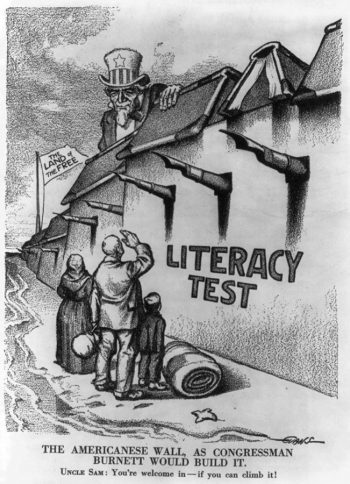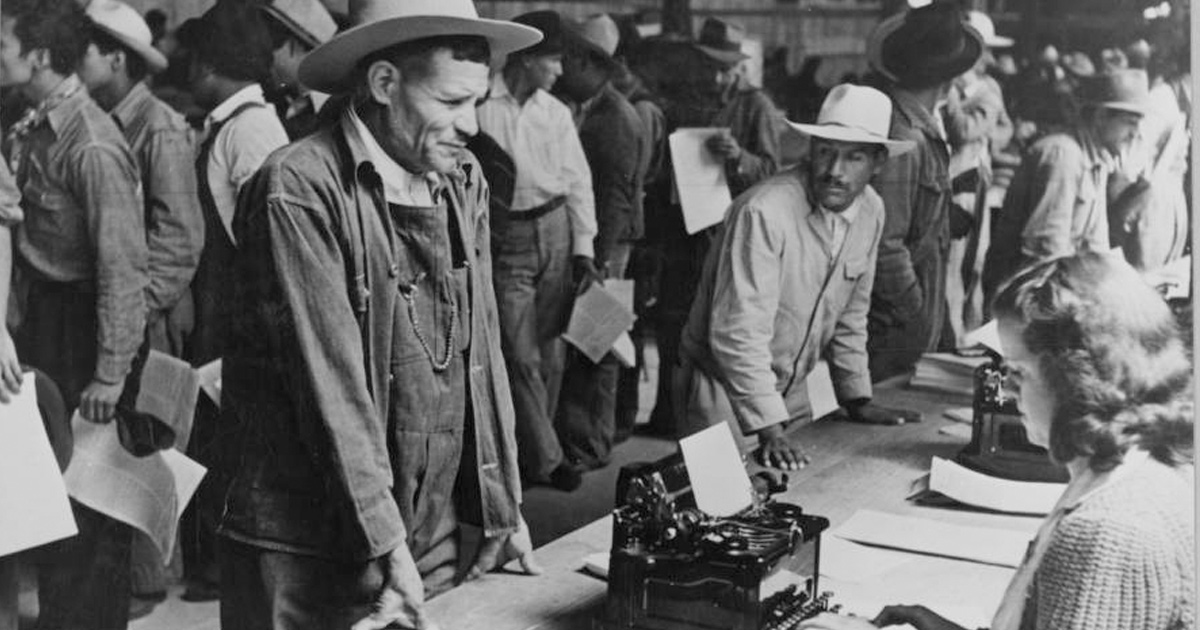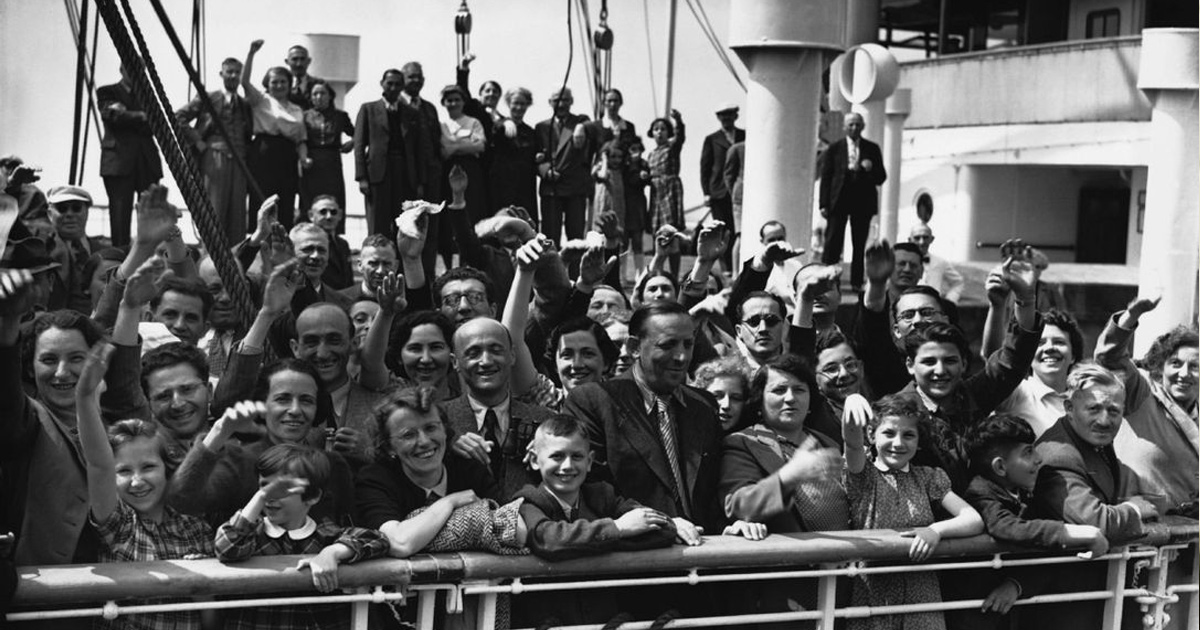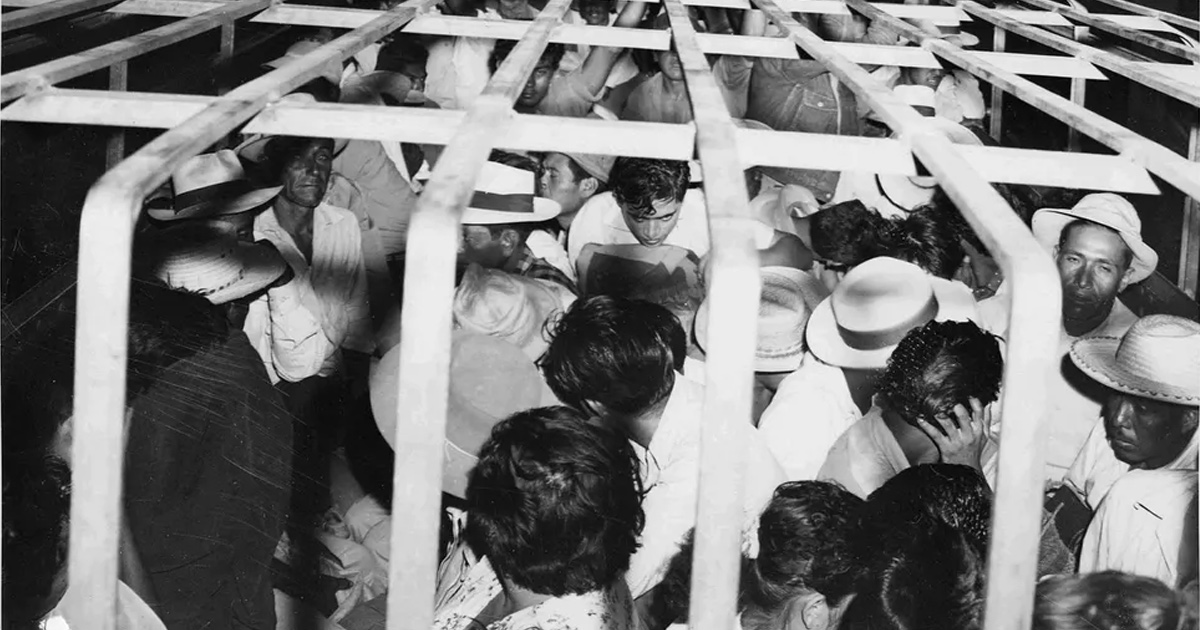This week, Ken Cuccinelli, Trump’s acting head of the United States Citizenship and Immigration Services (USCIS) and well-documented anti-immigrant racist, defended Trump’s public charge ploy against immigrants, saying, “It doesn’t seem like too much to ask to continue that tradition of inviting immigrants here who will not essentially go on welfare.” For starters, Cuccinelli painting immigrants as coming here for handouts is fundamentally flawed – and racist. But the traditions he does want to mirror are far more brutal:
Literacy Requirements and Nationality Quotas in the Early 1900s

When Congress passed the sweeping Immigration Act of 1917, they included an English literacy test, levied a tax on adults, and expanded the so-called “undesirables” list to include people with epilepsy, “idiots,” and people from much of eastern Asia and the Pacific Islands. It built on the Chinese Exclusion Act of 1882 and the anti-Japanese Gentlemen’s Agreement of 1907 and was largely informed by the wide-sweeping eugenics movement. When the law didn’t do enough to stem the flow of immigrants, it was revised in 1921 and again three years later to create strict quotas. The quota favored immigrants from countries like Germany, while Italian and East Asian immigrants who previously flowed through immigration stations like Angel Island in San Francisco Bay and Ellis Island in New York were severely limited or stopped entirely. The Immigration and Nationality Act wouldn’t end such quotas until 1965.
Anti-Mexican ‘Repatriation’ in the 1930s

As the Great Depression raged in the 1930s, Mexicans were targeted for scapegoating and accused of taking the few jobs available in the U.S. Businesses, local and state governments, and the Hoover White House all promoted the mass deportation, which they called repatriation to make it sound voluntary, of more than one million people. The programs, which were deeply rooted in racism and xenophobia, largely targeted Mexican people participating in relief programs at the height of the depression. They were boarded onto buses, cars, and trains, and even removed from hospitals, and taken to the border or even deeper into Mexico. More than 60 percent of those who were removed were actually U.S. citizens of Mexican descent. The hypocrisy of the decade is easy to spot as the repatriation program burnt out quickly after Pearl Harbor and the Bracero program, part of the Mexican Farm Labor Agreement, ushered Mexican workers into the U.S. (albeit on a temporary basis) to help with the war efforts. A mass round-up of Mexican immigrants would take place not even a decade later — President Eisenhower’s so-called “Operation Wetback.”
Rejecting Jewish Refugees During the Holocaust

In 1939, the U.S. State Department sent a telegram to the M.S. St. Louis, which was carrying more than 900 Jewish refugees from Nazi Germany. It read: “the passengers must await their turns on the waiting list and qualify for and obtain immigration visas before they may be admissible into the United States.” Even as applicants for visas surged to 125,000 in 1938, the quotas for German and Austrian immigrants would remain at 27,000. The St. Louis would be turned away in Miami, as well as by Cuba and Canada, and most of the Jews on the boat would be sent to Europe. Only about half of them would survive the Holocaust and many more would be interned in concentration camps before the end of WWII. A bill to allow 20,000 German Jewish children to come to the U.S. was defeated just after the ship set sail. As millions of Jews, LGBTQ+ people, and people with disabilities were massacred, the U.S. State Department continued to argue against the acceptance of refugees. It wasn’t until 1944 that the U.S. finally opened the door to tens of thousands of Jewish refugees. The legacy of our delay persists to this day.
Japanese Immigration in the 1950s

From 1924-1952, Japanese immigration was barred after the Supreme Court defined Japanese people as “aliens who were not eligible to be naturalized as American citizens.” After 1952, just six years after mass internment of Japanese Americans on American soil ended, the laws barring exclusion of Asian immigrants to the U.S. ended, but still only a few hundred Japanese people were allowed under the racist national origin quota system. Despite the quota system, there was still an influx of Japanese refugees in the 1950s due largely to other policies that were more about geopolitics and economic gain than morals and the American Way. Under the Refugee Relief Act of 1953, according to research by Fuminori Minamikawa published by Ritsumeikan University in Japan, about 2,200 refugees were allowed into the U.S. and almost half of them were sponsored by farmers who needed labor. When that law expired in 1956, the U.S. brokered a new deal with Japan to continue exploiting the labor of young Japanese men, letting in 1,000 more workers per year over the quotas.
“Operation Wetback” in the 1950s

In the 1950s, President Eisenhower’s so-called “Operation Wetback,” lauded by Trump on the debate stage in 2015, deported as many as 1.3 million immigrants to Mexico on buses, planes and overcrowded boats that were later compared to slave ships. The mass campaign took place with the help of the Mexican government, which was seeking to alleviate a labor shortage. Tens of thousands were sent to unfamiliar parts of Mexico; many others died on the journey.
As his MAGA slogan suggests, Trump would like to go back to such traditions and do it all again, with the help of white supremacists like Cuccinelli and Stephen Miller. But these parts of American history are to be learned from and avoided at all costs. Americans should fight back with everything we can or we will be written up in history books alongside these historical atrocities.
